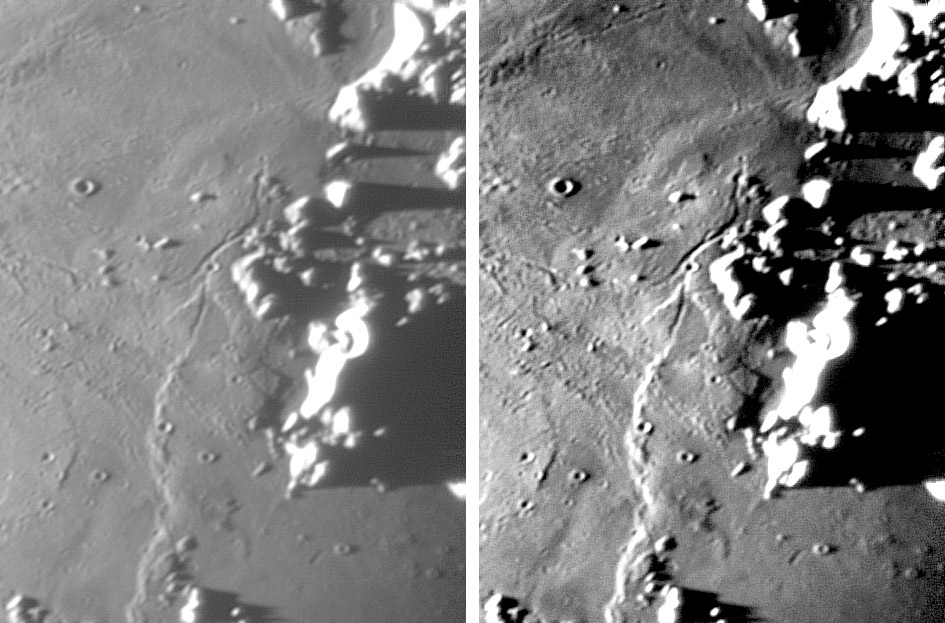
image by K.C. Pau
East of Autolycus, where the lavas of maria Imbrium and Serenitatis merge, is a wrinkle ridge that looks like a lava wave frozen just as it was about to spread from the small mare into the big one. And just north is a small island of slightly elevated mare surface cut by short rilles, one of which appears to be continuous with the mare ridge. In order to more clearly see the subtle features I have grossly enhanced (right) KC’s original image (left). The little island is marked by distinct edges that suggest the area is high because of some swelling - similar to the Valentine Dome to the east. Alternatively, it could be a relict of a previous mare surface that was preserved because it stands slightly higher than younger lavas that swirled around it. The Clementine color ratio image doesn’t suggest any different composition for the island compared to its surround seas, but does indicate that it has more superposed impact craters. The rilles appear to be remnants of a once more extensive system, perhaps associated with subsidence of the Imbrium basin. The extreme enhancement also reveals two or three ribbons of roughness that converge toward the left. These are secondary crater rays from Aristillus. Finally, why are these rille fragments named for Theaetetus when they are much closer to Aristillus? Some lunar mysteries are beyond observation and logic.
Technical Details:
15 August 2006. 10″ f/6 newtonian +5X barlow + Philips Toucam Pro; 160 frames stacked.
Related Links:
Rükl sheet 12
COMMENTS?
Click on this icon File:PostIcon.jpg at the upper right to post a comment.



